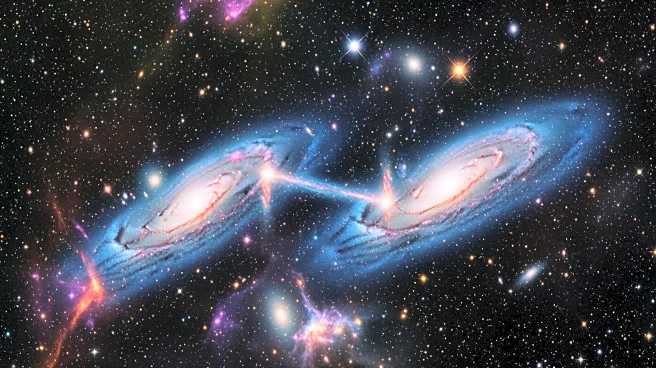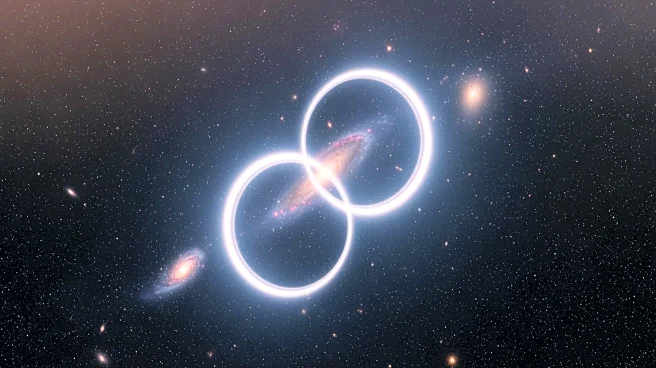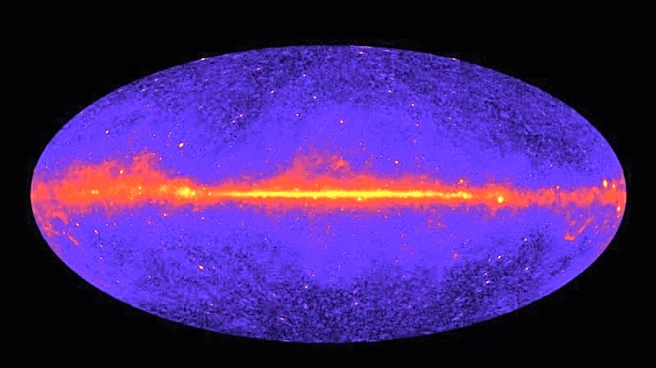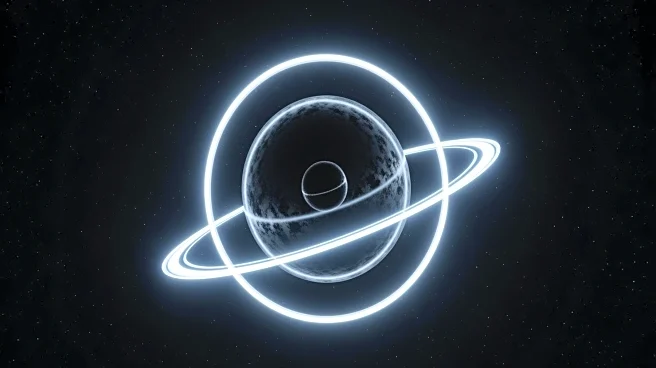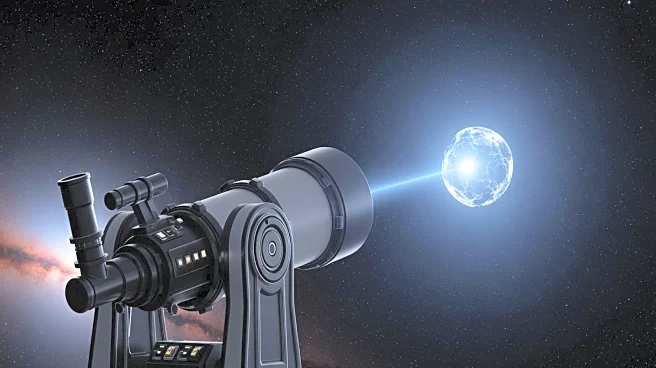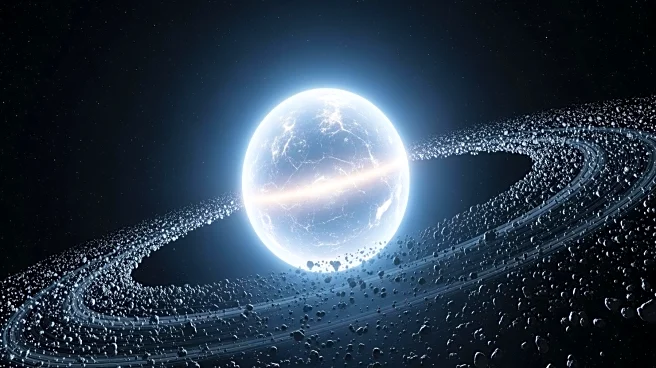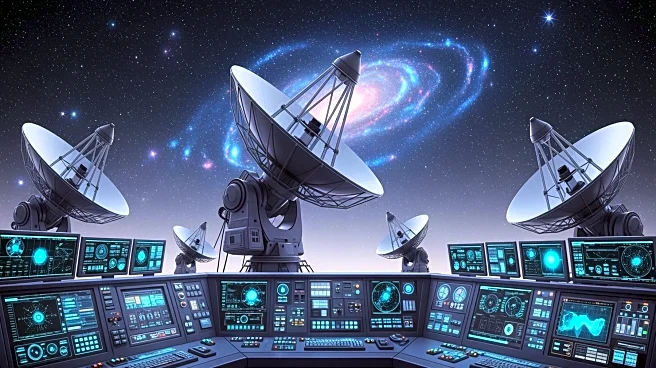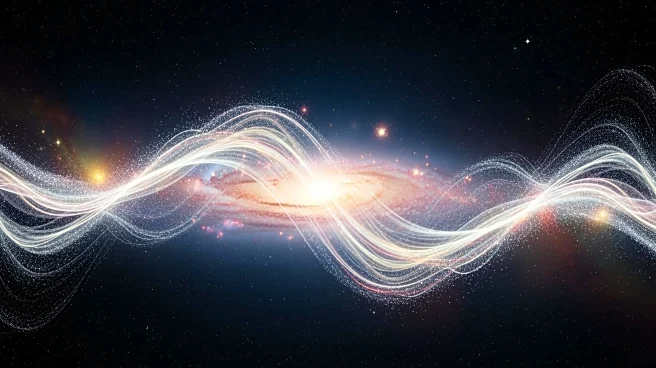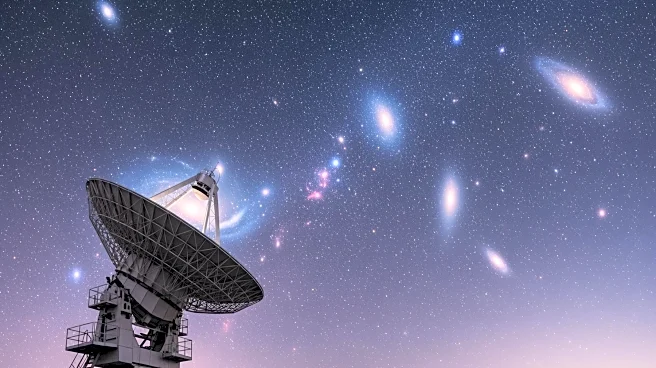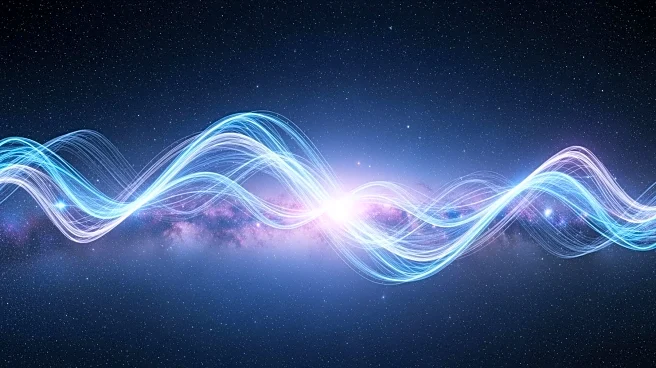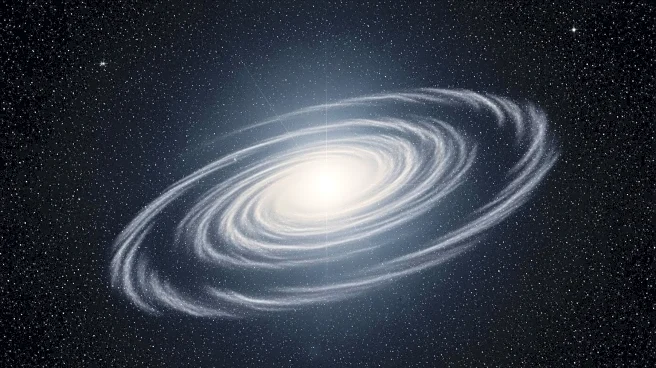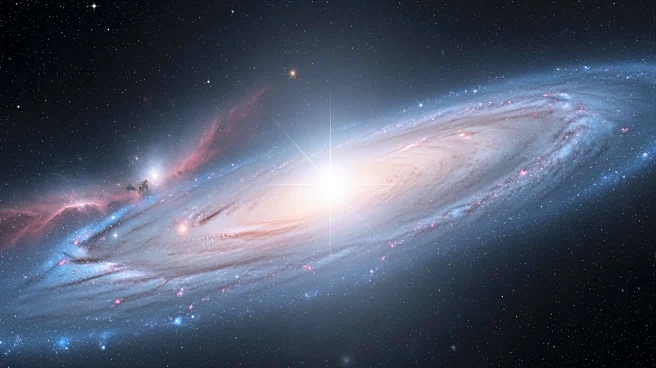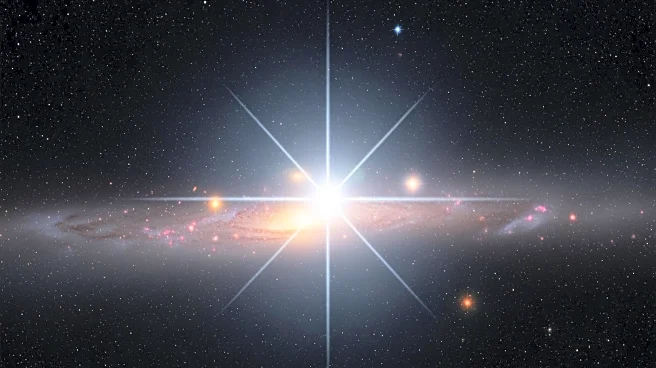What's Happening?
Scientists at the University of Western Australia's node of the International Centre for Radio Astronomy Research have discovered a massive gas bridge stretching 185,000 light-years between two galaxies, NGC 4532 and DDO 137, located 53 million light-years from
Earth. The study, published in the Monthly Notices of the Royal Astronomical Society, also identified a gas tail extending 1.6 million light-years beyond the bridge. This discovery provides new insights into how galaxies influence each other, with tidal forces and proximity to the Virgo cluster playing crucial roles in the observed gas dynamics. The research was part of the Widefield ASKAP L-band Legacy All-sky Survey, which maps hydrogen gas throughout the Universe.
Why It's Important?
The discovery of the gas bridge is significant as it enhances understanding of galactic evolution and interaction. Neutral hydrogen, a key ingredient in star formation, plays a crucial role in this process. By studying these gas structures, scientists can gain insights into how galaxies evolve, redistribute gas, and form stars under varying conditions. This contributes to a broader understanding of the Universe's most massive structures and their life cycles, offering clues about the complexities and history of star formation.
What's Next?
Further research and observations are expected to continue, focusing on the dynamics of these gas bridges and their impact on galactic evolution. The findings may lead to new models of galaxy interaction and star formation processes, potentially influencing future astronomical studies and theories.
Beyond the Headlines
The discovery highlights the importance of large-scale surveys and advanced radio telescopes in uncovering cosmic phenomena. It also underscores the interconnectedness of galaxies and the role of environmental factors in shaping their evolution.
